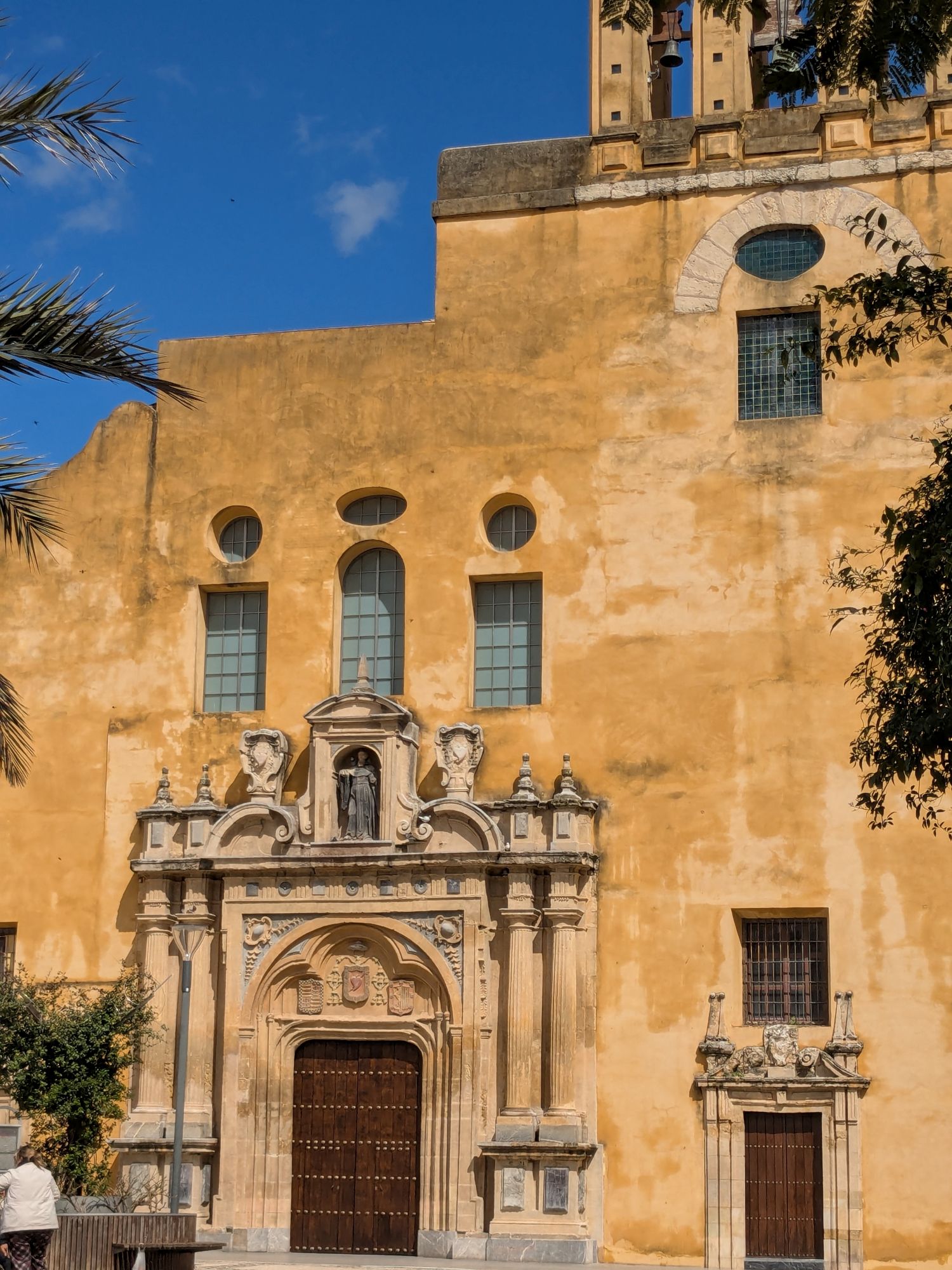After walking and walking in an old, old city, patterns have taken shape. Ghosts of one type or another have coalesced, gathered, and introduced themselves. Here’s three such things which took some time to recognize as thematic. Three discernible patterns that I’ve enjoyed imagining were real, then verified, all the while working through some hypothetical whys.
Big door, little door
I was sort of wracking my brain over why the old churches in Spain have enormous doors. I’d settled on the theory that they allowed rather large things through the front when the calendar called for pomp and circumstance. A really tall cross or one of those incense thingies like a pendulum on fire. When I consulted my knowledgable friend, Google, I learned the big doors were a feature because: 1) their architectural grandeur was, frankly, awe-inducing to the average peasant, 2) they permitted entry to the church by a rather large number of said awed peasants, and 3) they permitted the free entry and exit of the occasional mobile stagecraft that made the old time religion so awesome, i.e. super-sized crucifixes and smoking censers.
As to the little doors, I’m thinking this is fairly obvious. You’re not gonna swing open the tree-size slabs of door just to bring home your groceries.
So here’s some doors for you; call them double doors if you will. All of the following are in Córdoba except the two so noted.








Just don’t call me late for dinner
You can call me Muñoz Capilla or you can call me Calle de la Pelota… or so the saying goes.
Observing the changing of street names across a city has got to be like watching a tree grow. In Córdoba, however, the City takes these things seriously, these amorphous street designations. For one, in some cases, the City has placed porcelain plates on buildings’ walls at street corners, nominating the old street name next to the new one. And the City’s published a record, a concordance if you will, cross-referencing names of streets today against multiple 19th century street maps.
Puttering around town, I had no idea all of this was a thing. But in assembling photos and looking for more informaton about the changing of the street names, a more nuanced picture developed.





The Oculi!
After a bit of world wide webbing, I discovered the name of the architectural element known as the oculus. Wikipedia will be more than happy to tell you about these somewhat passe adornments which, nevertheless, seem to be ageless here in Spain. I’ll assume these were portals to foster the movement of air through rather thick walls. Not sure why the cut-outs high above the street are barred, but fancy iron work seems to be de rigeur in these parts, a not unpleasant fact of decorative life in Spain.










Themes, variations, and a bunch of things you don’t see every day on the other side of the Atlantic Ocean.
Saludos de LD2!


3 responses to “Themes & variations in 3 movements”
Never get tired of looking at the doors and the iron work. Master craftsmen indeed. Oculus is a new one for me. Stared at the last photo and can’t see the construction error. Need some hints. Thanks for the tour. Stay safe. Which means avoid the USA.
Check out the top right. First, what’s up with that exposed arch? Sort of unusual to have an arch that’s completely enclosed with stone, or whatever (e.g., the odd-shaped oculus). The arch is sort of centered below the lintel above, but the width of the span isn’t alignd to the spacing of the columns above. Then there’s the windows. That oculus and the window below are clearly not centered beneath the arch. Almost seems like the builders had an issue with the architectural plans and threw in an arch to ensure the weight above could be held. Dunno, but that’s my completely uneducated guess.
I see it now. Very different add on maybe. Doesn’t match the other oval oculus, love that word Plus the stone ledge above looks different than the rest of the ledge. A mystery that only a priest knows the answer to Send more riddles please. Enjoying the photo journey. I don’t know if you’re keeping up with Fox News, but it is getting “when the going get’s weird, the weird turn pro.” Lock and load, baby.